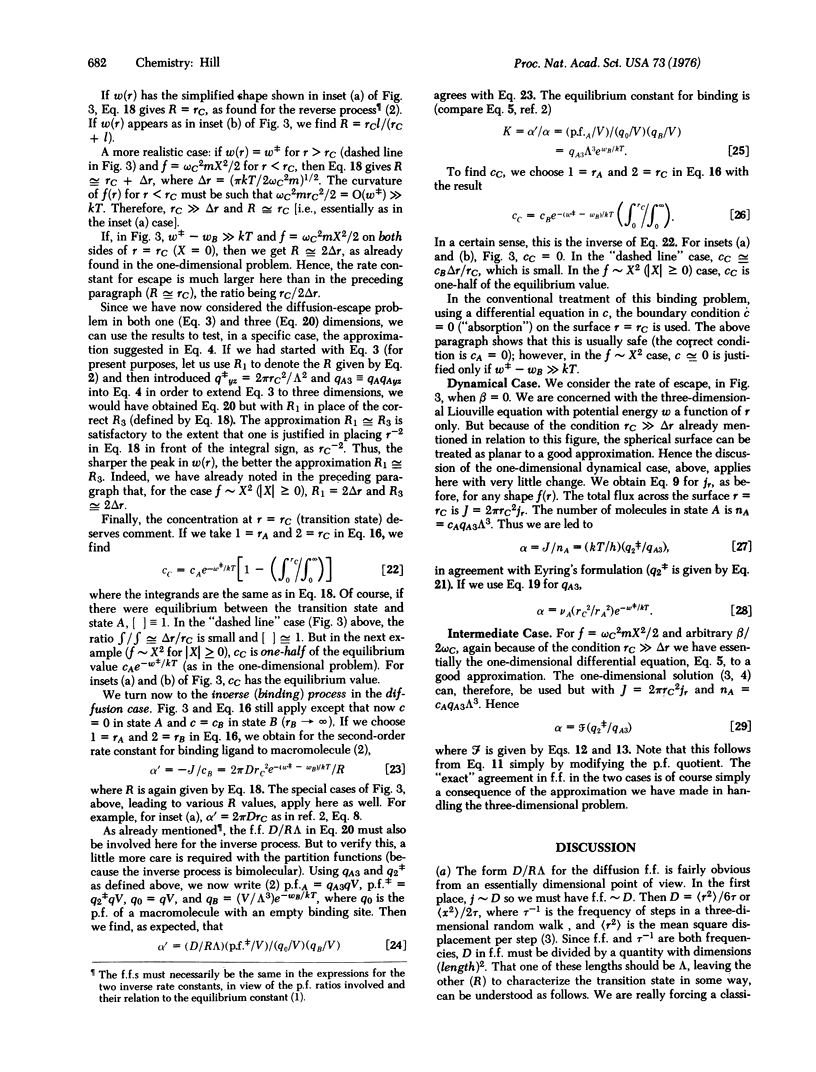Abstract
In the Eyring rate theory, the rate constant is expressed as a product of a frequency factor (kT/h) and a quotient of partition functions. Continuing an earlier paper, it is shown here by means of simple examples that the Eyring formalism may be extended to include diffusion-controlled processes if a new frequency factor, D/Rlambda, is substituted for kT/h, where D = diffusion coefficient, lambda = thermal de Broglie wavelength, and R = a characteristic distance that depends on the particular case. The Eyring formalism is also applicable in hybrid cases, intermediate between diffusion (D/Rlambda) and dynamics (kT/h). Because these modified frequency factors are not "universal" (as kT/h is), their main use (other than conceptual) would appear to be in cases in which one considers a simple model (with calculable frequency factor) together with a related more complicated model. In the latter case, as an approximation, one would combine the "simple" frequency factor with the "complicated" quotient of partition functions in order to obtain the desired rate constant. Examples are given.
Full text
PDF




Selected References
These references are in PubMed. This may not be the complete list of references from this article.
- Hill T. L. Effect of rotation on the diffusion-controlled rate of ligand-protein association. Proc Natl Acad Sci U S A. 1975 Dec;72(12):4918–4922. doi: 10.1073/pnas.72.12.4918. [DOI] [PMC free article] [PubMed] [Google Scholar]


